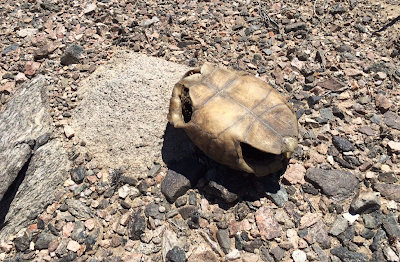Yellow Pine Project Threatens Wildlands in Nevada
NextEra Energy is proposing to build a 250 megawatt solar project in Nevada's Pahrump Valley that would destroy 4.6 square miles of intact desert habitat on public land. The project would further push the distance that residents of the Las Vegas area will travel to experience desert wildlands not scarred by industrial-scale energy projects. The Ivanpah, El Dorado, and Moapa areas to the south and north of Las Vegas have lost approximately 21 square miles of desert habitat to industrial-scale solar development in the past few years. Approximate area under consideration by NextEra for the Yellow Pine Solar project in the Pahrump Valley. The total application area covers over 9,000 acres, and the final project would destroy approximately 3,000 acres of the parcel. Some of the lands being considered for the project host desert tortoises already relocated once from a Clark County sanctuary, meaning the animals that survived the initial translocation will again be jeopardized,











